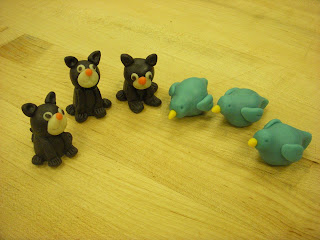To complete my tart, I first made my rosemary jelly by steeping rosemary in boiling water for one hour then removing the rosemary and cooking the water with apple cider vinegar and sugar until it boiled. I then added the liquid pectin to assist in the gelling process. I also had to correctly process my jelly for this part of the assignment. I next made my cornmeal dough so it could chill properly before being rolled out. I did this a week in advance so my dough was actually frozen between class sessions.
On the second day, I thawed my tart dough and blind-baked it to a very light brown. While it cooled, I used a mandolin to thinly slice red potatoes with the skins on and then cooked them in simmering water to soften them. I them dried them on paper towels before seasoning them with salt and pepper. I next made the shallot and blue cheese cream which had the addition of creme fraiche, white wine vinegar, a little bit of oil, and additional seasonings. Once these components were completed, I assembled my tart.
I took the blind-baked tart dough and spread a layer of rosemary jelly on the bottom of it. I next spooned in a lyter of shallot and blue cheese cream and spread it evenly. I then made a circle around the outer edge of the tart with the red potatoes. This baked until the crust was golden brown, the filling was bubbly, and the potatoes began to curl on the edges.
While the tarts were still warm, I spread another thin layer of rosemary jelly on top and then placed small bits of blue cheese and chives around the tart and garnished the center with a bit of rosemary. Chef really liked my product, as did my classmates. I really liked it too, and I worked on this a great deal to get it just right. I think it looks great and tastes pretty great too.



At the end of class, we had a chance to sample each other's products. It was fun to see that each person came up with an entirely different concept and some really tasty products. All in all, I really loved this class. I feel like I learned a ton of valuable skills and have a great foundation for preserving fruits and vegetables and using them in really creative ways. I am looking forward to some time this summer to try different recipes and come up with different applications for the products. As we say in class, jam on.

















































